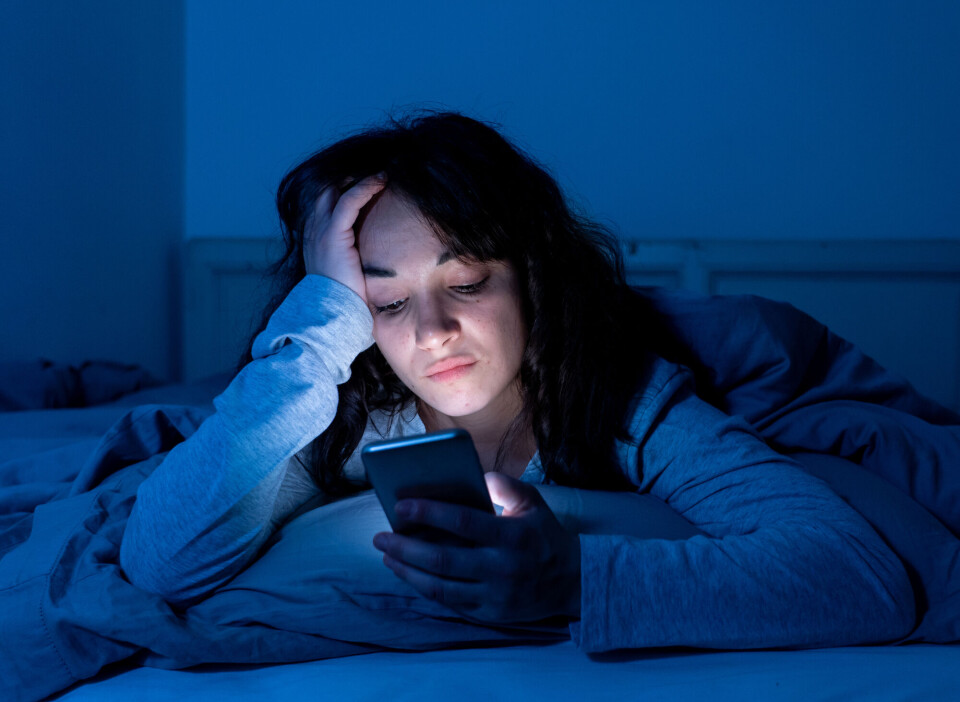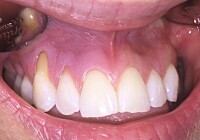Why you shouldn't be on your phone after going to bed
Screen time in bed significantly increased the risk of sleep problems and reduced sleep.

Is it really that bad to watch a show or scroll a bit in bed before going to sleep?
Yes, it is, according to a recently published study.
Data from more than 45,000 Norwegian students show that looking at a screen after going to bed significantly increases the risk of sleep problems.
Those who used screens for an hour before sleeping had a 59 per cent higher risk of experiencing symptoms of insomnia. They also reduced their sleep by 24 minutes.
Several studies have pointed to a connection between screen use and poor sleep.
But one thing surprised the researchers.
Steals rest time
They had assumed that being on social media would be worse than doing other things on a screen. That it would be worse than watching a movie, gaming, or listening to an audiobook.
“We expected that using social media would have a strong connection with poorer sleep, because it's so interactive and stimulates our emotions,” Gunnhild Johnsen Hjetland from the Norwegian Institute of Public Health says in a press release.
That turned out not to be true.
It was not what the students did on the screen that made a difference. It was how long they spent on it.
“This suggests that it's the screen use itself that disrupts sleep,” she says.
Hjetland and her colleagues believe the sleep disturbances stem from screens taking up time that would otherwise be spent resting.
Most of the students, nearly 70 per cent, used screens for both social media and other things like watching movies and browsing the internet before falling asleep.
Students with sleep problems
Using screens in bed is especially common among younger people, according to the researchers. They refer to other studies showing that 95 per cent of them use screens while in bed.
But most of the studies that look at sleep and screen use have been done on children and teenagers, according to Hjetland and her colleagues. They think too little is known about how this affects young adults.
Figures from the Student Health and Well-being Survey have previously found that Norwegian students were on their screens for an average of 46 minutes after going to bed.
The same survey also shows that there has been a significant increase in sleep difficulties among young adults from 2010 to 2022.
One in three students meets the diagnostic criteria for insomnia.
Hjetland recommends putting your screen away at least 30-60 minutes before going to sleep and turning off notifications during the night.
The chicken or the egg?
“This is a large study that is representative of Norwegian students. That's very good,” says sleep researcher Ståle Pallesen at the University of Bergen.
But it cannot say anything about the causes, he points out.
“We don't know if the students use screens in bed because they can't sleep, or if they can't sleep because they use screens. It probably goes both ways. It's well known that many people who struggle with insomnia use screens in bed to ease boredom or restlessness,” he says.
We know about some of the effects of screen use, he points out. For example, it is known that light from screens – especially blue light – induces wakefulness.
“It's not clear whether the researchers distinguished between screens in night mode or not. That would've been interesting to investigate,” says Pallesen.
Light hitting the eyes in the evening can also disrupt our circadian rhythm and make it more difficult to fall asleep, the researcher explains. In the long run, this can lead to people becoming more like night owls.
Should have asked about type of content
Content on screens can also induce wakefulness because it is mentally stimulating, says Pallesen. That was the theory the researchers tried to test by asking whether people were on social media.
But rather than grouping the students based on whether they were on social media or not, Pallesen would have liked the researchers to ask about the type of content. Whether it was positive or negative, engaging or not.
He would also have asked which screen was being used, its size, and whether night mode was on or off.
“That would have provided a better understanding of the mechanisms,” he says.
———
Translated by Nancy Bazilchuk
Read the Norwegian version of this article on forskning.no
Related content:

Subscribe to our newsletter
The latest news from Science Norway, sent twice a week and completely free.






































